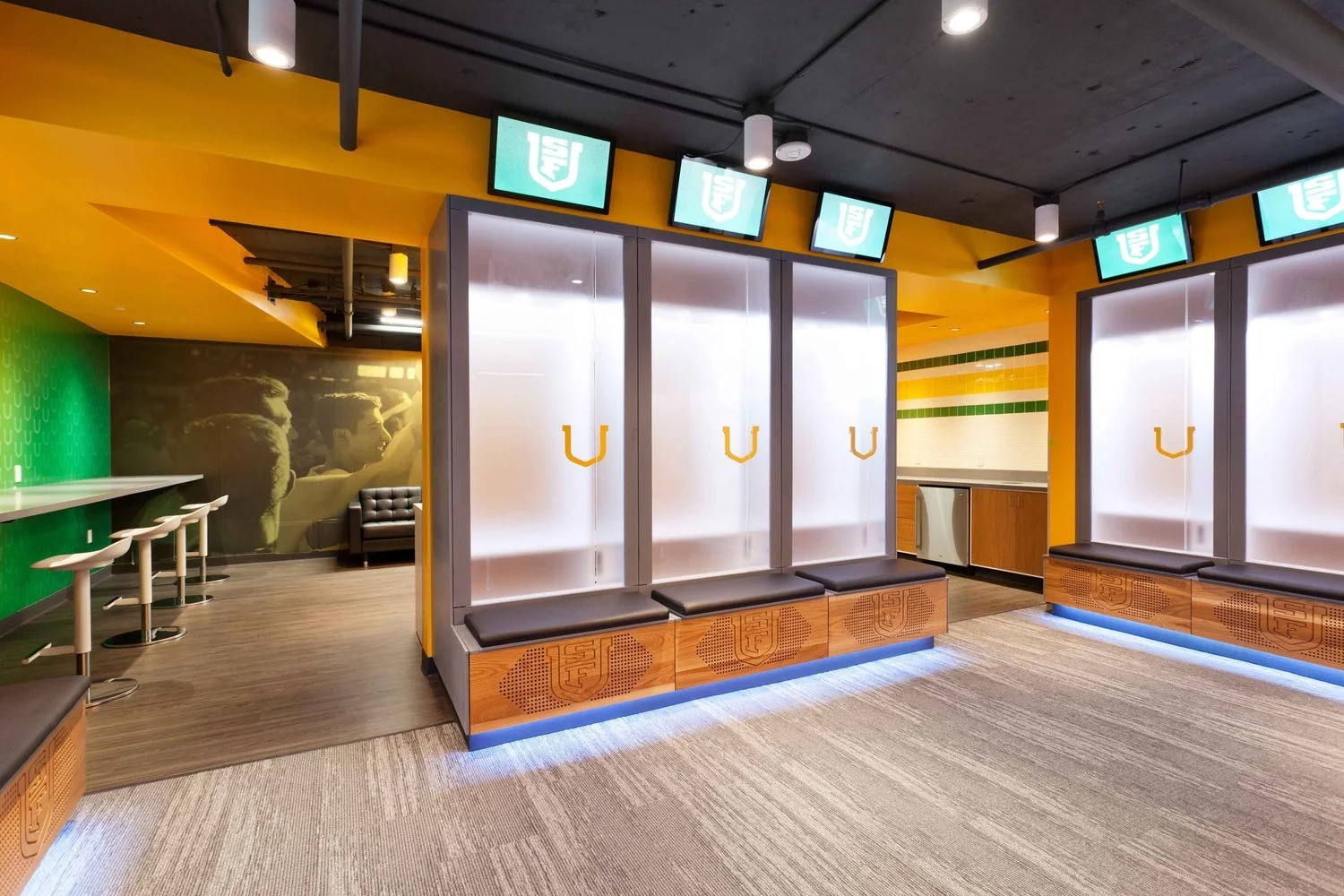Bug ID Keeps University of San Francisco’s
Ed Tech Best in Class
In early 2007, Bug ID founder Matt Lavine and team walked onto the University of San Francisco much like wide-eyed freshmen: awestruck by the beauty and legacy of the renowned private Jesuit University – and more than a little intimidated by what might lie ahead for an AV integrator that was not well established in the higher-ed vertical.
“We’d just been engaged to create the first in a new generation of classrooms at USF, a media space with high-definition viewing and surround sound,” says Lavine. “Would we measure up? Well, we were about to find out.”
Bug ID had done a lot of broadcast studio work and the firm’s reputation had reached someone at the school. That led to an initial conversation and proposal. “What won us the contract was the approach we mapped out for USF,” Lavine explains. “Unlike other integrators who had pitched their services, we saw a way to leverage the school’s existing Extron systems to save money, speed the integration, and reduce the learning curve for faculty who’d be using the technology.”
One classroom integration led to another, then to several more.
“Initially we were concerned that our newness to higher-ed might be a liability, but it turned out that what we lacked in direct experience, we made up for in problem-solving acumen and – crucially – our near-maniacal focus on performance and reliability,” says Lavine. “Having worked with many clients in the commercial broadcast industry, we knew just how important it is to be up and running all the time. Well, it turns out that colleges and universities need reliability just as much as the corporate sector, if not more so.”
Higher education operates on ultra-rigid schedules corresponding to the milestones of the academic year. Moreover, campus learning spaces and technologies are managed in a highly choreographed manner not only to accommodate an unforgiving calendar, but to maximize scarce resources and maintain the smoothness of operation that students expect from an expensive private learning institution. More than ever before, colleges and universities compete for students –an audience with little patience for anything less than a technology experience that’s on a par with what they get every moment of the day from their own devices.
Lavine’s job isn’t only to meet student expectations. Success also depends on adhering to the hard-and-fast demands that a university places on its technology infrastructure. “When just one classroom suffers a technology failure and the school has to scramble to find an alternative learning environment, that can lead to a cascade of complications for everyone involved,” says Lavine. “For virtually everyone on campus – students and faculty alike – scheduling rules the day. Small disruptions can lead to huge headaches, and the last thing any university can afford are the expenses that come along with technical snafus.”
Once Bug ID proved that it understood USF’s technical requirements and performance expectations, the school’s ITS group tasked Lavine and crew with upgrading classroom tech from VGA analog video on a much larger scale.
“Demonstrating that we could work with DVI and HDMI led USF to ask us to create a standard for digital upgrades to convert all their classrooms to digital technology,” says Lavine. “But we did much more than that. We helped develop all the interfaces. We determined what the lectern would look like, how gear fit into the classroom ecosystem, and how it was operated and serviced.”
By 2010, Bug ID was well on its way to becoming the university’s principal AV integrator.
“We were doing it all. From just a few classrooms, we went on to do hundreds and hundreds, including remote facilities in Santa Rosa, Sacramento, San Jose and Orange County.” What’s more, USF has engaged Bug ID not only for standard classroom solutions, but customized learning environments like a fully functional stock-trading facility based on the Bloomberg model. Additionally, Lavine’s team has integrated AV technology for production studios, conference rooms, dorms, food service outlets, video walls, digital signage, and athletic facilities, as well as event spaces with projection, sound, wireless mics and other technologies. Recently, they designed and integrated AV for a nursing simulation lab complete with cameras, mics, talk-back systems, monitors, intercoms and more.
Asked about the USF work he’s proudest of, Lavine answers, “We put a lot of thought into every space, so it’s hard to identify just one. What sticks out for me as a point of pride – and this is something I know USF appreciates – is our nimbleness in responding to new and often unexpected challenges. Take COVID as an example. That was a crisis that came out of nowhere! When the pandemic hit, we had to add a whole new layer of streaming tech to the existing infrastructure.”
For Lavine, “nimbleness” might just be Bug ID’s
secret weapon.
“We’re constantly striving to maximize our agility and be responsive in the broadest sense,” he explains. “It’s about generating ideas in a timely manner and executing on them efficiently. It’s also about being a true partner to your clients – getting to know them as individuals and understanding their priorities, as well as familiarizing yourself with the breadth of their facilities and partners.
“Ultimately, what makes us so valuable to USF is the fact that we’ll do whatever it takes to keep their technology infrastructure up, running and on schedule. That means supporting our systems long after the sale. It means 24/7 accessibility. It can even mean taking responsibility to solve problems that aren’t covered by any contract. That’s how you build the kind of loyalty and trust that create a relationship you can measure in decades.”




